 The Grey Wolf (Chief Inspector Armand Gamache, #19) by Louise Penny
The Grey Wolf (Chief Inspector Armand Gamache, #19) by Louise Penny Format: eARC
Source: supplied by publisher via Edelweiss
Formats available: hardcover, large print, paperback, ebook, audiobook
Genres: mystery, suspense, thriller
Series: Chief Inspector Armand Gamache #19
Pages: 425
Published by Minotaur Books on October 29, 2024
Purchasing Info: Author's Website, Publisher's Website, Amazon, Barnes & Noble, Kobo, Bookshop.org, Better World Books
Goodreads
The 19th mystery in the #1 New York Times-bestselling Armand Gamache series.
Relentless phone calls interrupt the peace of a warm August morning in Three Pines. Though the tiny Québec village is impossible to find on any map, someone has managed to track down Armand Gamache, head of homicide at the Sûreté, as he sits with his wife in their back garden. Reine-Marie watches with increasing unease as her husband refuses to pick up, though he clearly knows who is on the other end. When he finally answers, his rage shatters the calm of their quiet Sunday morning.
That's only the first in a sequence of strange events that begin THE GREY WOLF, the nineteenth novel in Louise Penny's #1 New York Times-bestselling series. A missing coat, an intruder alarm, a note for Gamache reading "this might interest you", a puzzling scrap of paper with a mysterious list—and then a murder. All propel Chief Inspector Gamache and his team toward a terrible realization. Something much more sinister than any one murder or any one case is fast approaching.
Armand Gamache, Jean-Guy Beauvoir, his son-in-law and second in command, and Inspector Isabelle Lacoste can only trust each other, as old friends begin to act like enemies, and long-time enemies appear to be friends. Determined to track down the threat before it becomes a reality, their pursuit takes them across Québec and across borders. Their hunt grows increasingly desperate, even frantic, as the enormity of the creature they’re chasing becomes clear. If they fail the devastating consequences would reach into the largest of cities and the smallest of villages.
Including Three Pines.
My Review:
You’ve heard the parable – even if you don’t recognize it at first. It’s often attributed to the Cherokee, but occasionally to a different Native American tribe. It’s the story about the two ‘wolves’ that battle inside each soul. One wolf represents the darker parts of human nature; anger, envy, jealousy, greed, arrogance, etc. Because that wolf is the embodiment of the dark side, it is often pictured as a black wolf.
The other wolf represents the better angels of our nature; joy, peace, love, hope, serenity, humility, empathy, truth, compassion, etc. That is the grey wolf.
As the parable goes, the wolf that wins the endless battle within each soul is the one that is fed by the thoughts and deeds of that person.
Having gotten to know Chief Inspector Armand Gamache over the course of this series, it’s all too easy to see Gamache as the embodiment of that grey wolf. At this point in his life and career, in more ways than one as he has literally become a grey wolf, older, sadder, wiser, but still fighting the good fight to do his best by his people and his province, in spite of the black wolves arrayed against him.
Including the one inside his own soul.
This particular case begins, as so many of Gamache’s cases begin, with a series of unrelated events that, on the surface have zero in common. Two murders, close together in time but remote and as far apart as they could be in the vast province of Québec, committed in precisely the same manner as a mafia hit. Even though neither victim appears to have any connections whatsoever with the ‘Sixth Family’ that controls organized crime in the province.
Someone breaks into Gamache family’s pied-à-terre in Montreal while he and his wife are at their home in Three Pines. But absolutely nothing appears to have been taken or damaged in the crime.
And last but absolutely not least, especially in Gamache’s mind and memory, a political operative that he crossed early in his career, who attempted to destroy him and his family and very nearly succeeded, calls in the middle of the night to say that she has information he should be interested in. Maybe he should be, but he’s absolutely not considering the source – with expletives.
At least, not until the unrelated incidents start coming together into a pattern that his instincts – if not the actual evidence before him – tells him is the tip of a terrible iceberg. A pattern that tells him that there is something very, very rotten indeed in the Province de Québec, a pattern that will lead Gamache and his seconds-in-command, Isabelle Lacoste and his son-in-law Jean Guy Beauvoir, to the remotest corners of Québec, back to the scene of the lowest point and most desperate points in the relationships between Gamache and his son-by-birth Daniel as well as his son-by-adoption Beauvoir, and all the way to France, to a secure monastery keeping the secret of one of the world’s most famous recipes – and the potential application of one of the world’s deadliest poisons.
Gamache knows there is an enemy within – probably more than one. He has very few people he can trust absolutely, very little time and no authority with which to demand answers. And no faith that any of his desperate choices are the right ones. But he has to try, no matter the cost to his career or himself.
Because the nightmare he is desperate to prevent is only the beginning if he fails.
 Escape Rating A: The Chief Inspector Gamache series, like many long-running series, tells each individual story on two levels. The particular work in hand, in this case, The Grey Wolf, focuses on the case that has been brought to Gamache’s attention at this moment in time, shows his team dealing with the clues and red herrings, figuring out which are which, and eventually solving the case or at least the immediate danger of it.
Escape Rating A: The Chief Inspector Gamache series, like many long-running series, tells each individual story on two levels. The particular work in hand, in this case, The Grey Wolf, focuses on the case that has been brought to Gamache’s attention at this moment in time, shows his team dealing with the clues and red herrings, figuring out which are which, and eventually solving the case or at least the immediate danger of it.
The other level is the one where things often get very deep, which in many ways goes all the way back to Gamache’s four things that lead to wisdom. As he explains to a group of young police officers in Still Life, “They are four sentences that we learn to say, and mean…I don’t know. I need help. I’m sorry. I was wrong.”
And he lives by those principles – even when it hurts. Especially when it hurts. And most especially when he discovers that he was wrong. Which he does, both in this story and in all the stories that have led him and his team to this point. Because the cop shop aspects of the usual mystery series have become a found family, AND Gamache has a tendency to tilt at big, important windmills that take that family into dangerous places and very fraught political circumstances.
This is one of those cases.
Which is where interesting and frustrating and really, truly frightening things happen in this story. As a criminal investigation, the reader is often caught up in Gamache’s own frustrations as the case is initially so elusive he’s not sure if there are one or several or precisely what it or they might be. Multiple people are playing multiple games, with both the best and worst of intentions, and it’s difficult for the reader to watch Gamache and his team flail around as much as this story forces them to.
It takes a lot of both investigation and speculation to pull this one together.
The frightening part, the part that makes this story a whole lot more fitting for Halloween week than I originally imagined, is the nature and scope of the vast criminal enterprise that Gamache has to stop. Because I don’t want to reveal the big secret, I’m going to do my damndest to talk around it.
The rot at the heart of this case, at first, read like some kind of supervillain shit. I mean that in all seriousness. It takes a situation that is already happening, that is already terrifying, that many people are trying to mitigate if not stop, something utterly real – and then posits that someone in a position of power is planning to deliberately cause an incident of deadly magnitude and then manipulate it to gain yet more power. Not in some wartorn country halfway around the globe, but in the heart of Canada.
And at first my mind went to Lex Luthor and some of his ilk and flew right out of my willing suspension of disbelief. But I kept thinking about it. And came to the unfortunately but truly frightening conclusion that it’s entirely too plausible. Then I started gibbering a bit because it so easily could. Not exactly this way, but threats of this magnitude are already on the horizon and people in power who would create and manipulate those threats are not merely waiting in the wings but believe they are in entirely too many ‘on-deck’ circles.
To make a very long story short, I picked this up because I simply love this series – especially its characters – very, very much indeed. Part of why I continue to read, book after book, is not just that those characters are fascinating, but that their relationships change shape over time. The way they work together is never static, and it often produces the kind of low-key bantering humor that arises in a group that knows each other well and loves each other much – and provides the light moments that this particular entry in the series definitely needed. And I love them all for it, even the crazy poet and her duck. If you’re looking for mysteries that are considerably more, and go infinitely deeper, than merely ‘whodunnit’, Chief Inspector Armand Gamache is a treasure – especially when he takes us on a walk through dark places, as he does in The Grey Wolf.

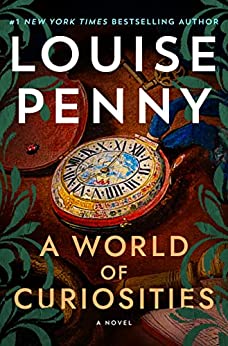 A World of Curiosities (Chief Inspector Armand Gamache, #18) by
A World of Curiosities (Chief Inspector Armand Gamache, #18) by  Escape Rating A+: I know I’m not conveying this one well at all. Obviously, I loved it. I was also a bit disturbed by it, because all of the past crimes that lead up to this present danger were very disturbing.
Escape Rating A+: I know I’m not conveying this one well at all. Obviously, I loved it. I was also a bit disturbed by it, because all of the past crimes that lead up to this present danger were very disturbing.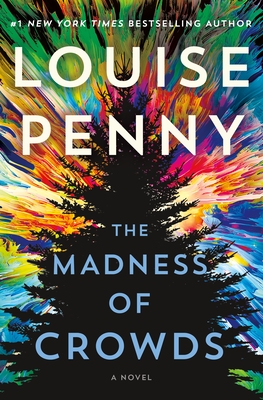 The Madness of Crowds (Chief Inspector Armand Gamache, #17) by
The Madness of Crowds (Chief Inspector Armand Gamache, #17) by 
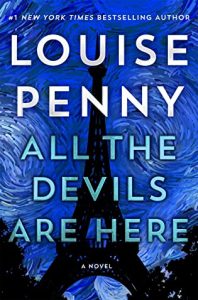
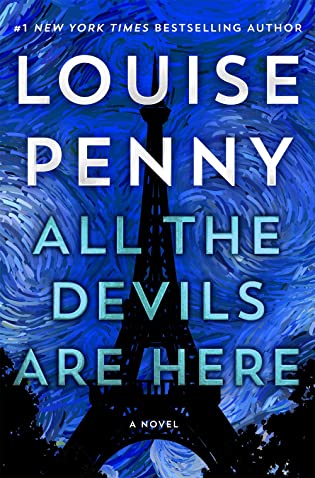 All the Devils Are Here (Chief Inspector Armand Gamache, #16) by
All the Devils Are Here (Chief Inspector Armand Gamache, #16) by  Escape Rating A++: This is one of those reviews where I just want to squee all over the page. Which might adequately express that I LOVED THIS BOOK VERY MUCH, but isn’t exactly informative as to why you should love this series and this book too.
Escape Rating A++: This is one of those reviews where I just want to squee all over the page. Which might adequately express that I LOVED THIS BOOK VERY MUCH, but isn’t exactly informative as to why you should love this series and this book too. A Better Man (Chief Inspector Armand Gamache, #15) by
A Better Man (Chief Inspector Armand Gamache, #15) by  Chief Inspector Armand Gamache, after the harrowing events at the end of
Chief Inspector Armand Gamache, after the harrowing events at the end of 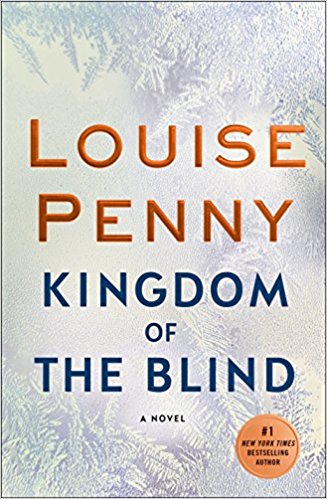 Kingdom of the Blind (Chief Inspector Armand Gamache, #14) by
Kingdom of the Blind (Chief Inspector Armand Gamache, #14) by  This is a story where there are two cases, as there often are in this series. One case initially seems trivial, but of course turns out to be much larger than it appears. But it does not tie into the other case in this story, the one that not only starts out large, but started out in the previous book in the series,
This is a story where there are two cases, as there often are in this series. One case initially seems trivial, but of course turns out to be much larger than it appears. But it does not tie into the other case in this story, the one that not only starts out large, but started out in the previous book in the series,  Glass Houses (Chief Inspector Armand Gamache, #13) by
Glass Houses (Chief Inspector Armand Gamache, #13) by  A Great Reckoning (Chief Inspector Armand Gamache, #12) by
A Great Reckoning (Chief Inspector Armand Gamache, #12) by 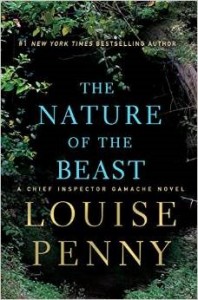 At the end of the utterly marvelous
At the end of the utterly marvelous